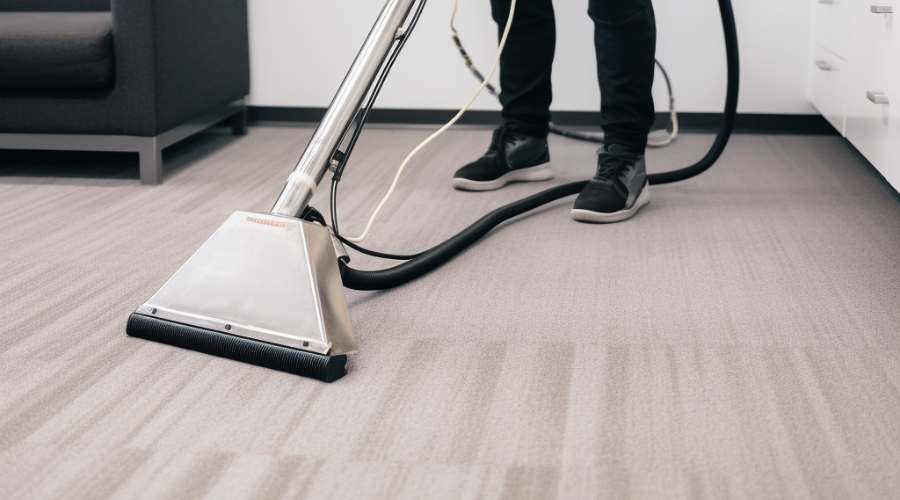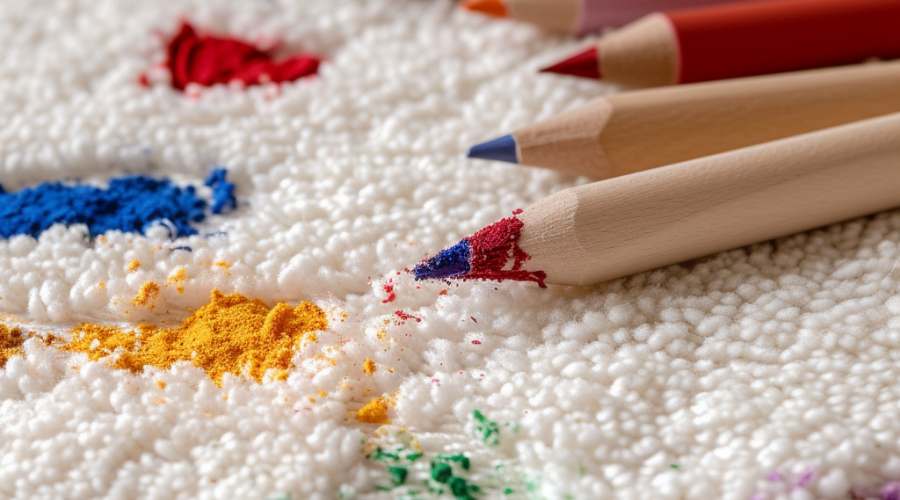Removing Stubborn Stains from Carpet
A Comprehensive DIY Guide
Carpets are prone to all manner of staining given their heavy foot traffic and potential for spills. Stains caused by food, drinks, dirt, pets, and other accidents can be frustrating and make carpets appear dingy and worn. Thankfully, with the right techniques and products, it’s possible to remove most stubborn carpet stains at home without calling in expensive professional cleaners.
Whether your carpets are made of synthetic fibers or natural fibers like wool, following some key guidelines can help restore them to their former glory after mishaps. This comprehensive guide provides tips to lift and eliminate even toughest stains using common household ingredients.
Must-Have Carpet Cleaning Supplies
Having certain supplies readily available will give you a head start on any carpet stains you encounter. It’s wise to gather and keep these stain-fighting ingredients in a designated spot for carpet cleaning emergencies:
- Baking soda – Absorbs and deodorises stains
- Dish soap like Dawn – Cuts through oils and grease
- White vinegar – Disinfects and breaks up grime
- Hydrogen peroxide – Disinfects and whitens
- Ammonia – Helps lift stubborn stains
- Paper towels – Blotting liquids
- Clean rags – Blotting
- Carpet cleaner solution or rental steam cleaner – Deep clean when finished
With these carpet stain removers easily accessible under the sink or in the laundry room, anyone can be fully equipped to handle mystery stains when they strike.
6 Key Steps for DIY Carpet Stain Removal
No matter what caused the stain, follow these essential steps whenever treating and removing it:
1. Blot the stain immediately
After a spill occurs, swiftly grab clean white dry cloth to blot and absorb as much of the liquid as possible. Avoid excess rubbing or scrubbing, which can force the spots deeper into carpet fibres.
2. Don’t scrub the stain
It can be tempting to scrub or work a carpet stain aggressively, but this often backfires by causing it to penetrate farther into the carpet backing and underpad. Gentle dabbing is key.
3. Work outward from the stain
Always start blotting and treating the outer edges of the stain first, slowly working toward the center. This helps contain it and prevent spreading.
4. Rinse with cool water
After applying a cleaning solution, be sure to rinse the area to remove residue. Blot again with dry colorless towels.
5. Repeat until stain is removed
It typically requires multiple rounds of treatment and rinsing to fully extract a tough stain. Persistence is vital.
6. Allow carpet to dry fully
After the final rinse, place weighted paper towels over the area and allow 6-12 hours for drying before walking on the carpet again.
Tackling Water-Soluble Stains
Marks caused by liquids require a water-based cleaner. These include:
- Fruit juice, alcohol, and soda
- Mud, latex paint, and dye
- Blood stain, vomit, and bodily fluids
To treat these stains:
- Mix 1 teaspoon dish soap with 1 cup warm water and gently dab it onto the stained area using a clean white cloth.
- Alternatively, mix equal parts vinegar and water and dab onto the stain.
- Always work inwards from the edges of the stain to prevent spreading.
Vinegar and plain water or dish soap solutions prove highly effective for conquering stains made by red wine, mud, juice, paint, vomit, and the like. The key is to avoid excess moisture and immediately rinse and blot.
Removing Oil-Based Stains
Grease, wax, cosmetics, adhesives, and other oil-based stains require solvents to break down the oils. Recommended treatments include:
- Place a paper towel over the stain and run a warm iron over it to draw out the oily substance into the absorbent cloth.
- Apply a small amount of nail polish remover, rubbing hairspray to a clean cloth and gently dab the stain repeatedly.
- Stain types: Butter, greasy foods, motor oil, mascara, adhesive residuals
The heated iron method works remarkably well to melt grease stains away for good, while alcohol-based solvents like nail polish remover can tackle more stubborn oil-based stains with some patience and repeated applications.
Eliminating Pet Stains and Odors
Pet urine stains, feces, and vomit can be especially tricky to conquer given the concentrated proteins and acids. To fully destroy them:
- Use an enzymatic cleaner formulated for pet mess, like Nature’s Miracle, to break down the enzymes and acids in pet waste. Follow label instructions closely.
- After allowing the cleaner to soak in for a few minutes, rinse the area with a 50/50 vinegar and water solution using a spray bottle.
- Next, make a solution of 1 teaspoon dish soap mixed with 1 cup warm water. Use this to rinse away any lingering odors.
- Repeat these simple steps as needed until the stain and smell are completely gone.
Pet waste can penetrate deeply so enzymes are needed to fully eliminate stains. Always check for lingering odors and re-treat areas as needed to prevent re-soiling.
Removing Lingering Coffee Stains
Coffee spills often go unnoticed at first, then leave behind a persistent light brown stain later after drying. To treat set-in coffee stains:
- In a spray bottle, mix 1 tablespoon dish soap, 2 teaspoons vinegar, and 2 tablespoons of hydrogen peroxide with 1 cup hot water.
- Lightly spray the stain and allow the solution to sit and penetrate for 5-10 minutes.
- Blot the solution out moving inward from the edges using clean white towels.
- Rinse with cold water while continuing to blot with fresh towels.
The combination of dish soap, vinegar, and peroxide in solution can help lift even subtle coffee discoloration that might otherwise go overlooked until carpets undergo a deeper clean.
Attacking Old, Set-In Stains
Mystery stains that have set into the carpet fibers present more of a challenge. To remove old, unidentified stains:
- Lightly mist the area with warm water using a spray bottle until the stain appears moistened.
- Make a 50/50 vinegar and liquid solution and apply directly onto the stain. Cover with plastic wrap and allow to sit for 1 hour.
- After 1 hour, rinse with clean water while gently blotting with colorless towels until debris is removed.
- Next make a detergent solution of 2 tablespoons ammonia in 1 cup water and spray it directly onto the stain. Cover with plastic again for 1 hour.
- Rinse and blot dry. If the stain persists, consult the carpet cleaner’s instructions and gently treat the area.
- Once dry, vacuum up any remaining powder remnants.
Rewetting and purposefully allowing time for the vinegar and ammonia solutions to penetrate and work helps tackle the most stubborn dirt. Calling in experts may ultimately be necessary, however.
Preventing Future Carpet Stains
While it’s impossible to keep carpets perfectly pristine at all times, especially in high-traffic areas, some habits can help minimise staining:
- Have carpets professionally steam cleaned every 6-12 months to prevent dirt and residuals from accumulating.
- Apply a stain-resistant sealant like Scotchguard to carpet to repel excess liquid. Reapply every 6 months.
- Immediately clean up spills when they occur to avoid penetration into fibers. Keep towels within reach.
- Avoid eating and drinking on carpeted areas to prevent accidental spilling.
With some diligence and protective measures, homeowners can help keep their carpets looking neater between professional cleanings.
When to Call in a Professional Carpet Cleaner
In cases of severe staining or lack of success removing stains at home, contacting professionals may become necessary. Signs it’s time to bring in expert reinforcements:
- Stain reappears shortly after removal or once carpet dries
- It has been set in for an unknown extended period
- Lack of time or physical ability to perform removal
- Stain covers a very large area of carpeting
- Long-term heavy soiling
With commercial-grade solution, powerful suction, and years of experience under their belt, professionals can better handle extremely persistent marks or thoroughly clean carpets after chronic heavy soiling.
Conclusion
While common carpet stains from daily spills and traffic are inevitable, they don’t have to become permanent issues with the right DIY removal techniques. By responding quickly, patiently dabbing rather than scrubbing, and using mild dish soap, peroxide, ammonia, and more solutions to difficult stains, homeowners can eliminate most carpeting issues and restore their original appearance. With some diligent upkeep and protective measures, carpets can maintain their pristine appeal between periodic deep cleanings from professionals.



Leave A Comment
You must be logged in to post a comment.